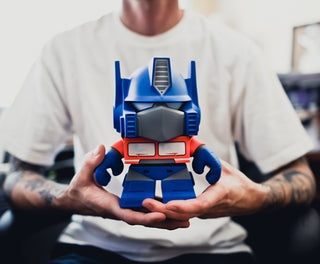Like most successful creatives, Les Schettkoe‘s career path has been an unlikely culmination of curiosity, talent, skill, imagination, and a little luck. Officially a freelance consultant and graphic designer by trade, Schettkoe’s journey started with the opening of his record store, Zen Beats in 1999. Following a couple of years of self-taught graphic design during down times at the shop, he landed a position at Disney, working as a senior designer in the storied company’s consumer products division. During his time there he was able to see several major projects come to fruition, including BLOC28, an urban fashion line featuring work from street artists such as EWOK, RIME and David Flores, and the collaboration between Disney and The Hundreds, which forever changed the way Disney collabs are made (Ask Bobby).
Following a long stint in the corporate world, Les eventually found his calling as a consultant and designer for hire, which has led to a long list of clients and partners, including productions for legendary toy maker Hasbro, Linkin Park, Converse, X-LARGE, Osiris, and Disney, just to name a few. In 2011, he started his own agency, Division Creative Foundry, which brought all of his interests in street art and design to the forefront and gave him a chance to continue bridging the gap between street artists and consumer goods, including ongoing projects with famed Los Angeles Chicano artist, Chaz Bojorquez.
Always inspirational and as humble a person you’ll meet, I caught up with Les at his studio in North Hollywood to talk about what’s brought him success as a solo artist and some of the key attributes that keep him going. Shooting off the top of the dome, below is Les’s guide to surviving as a freelancer.
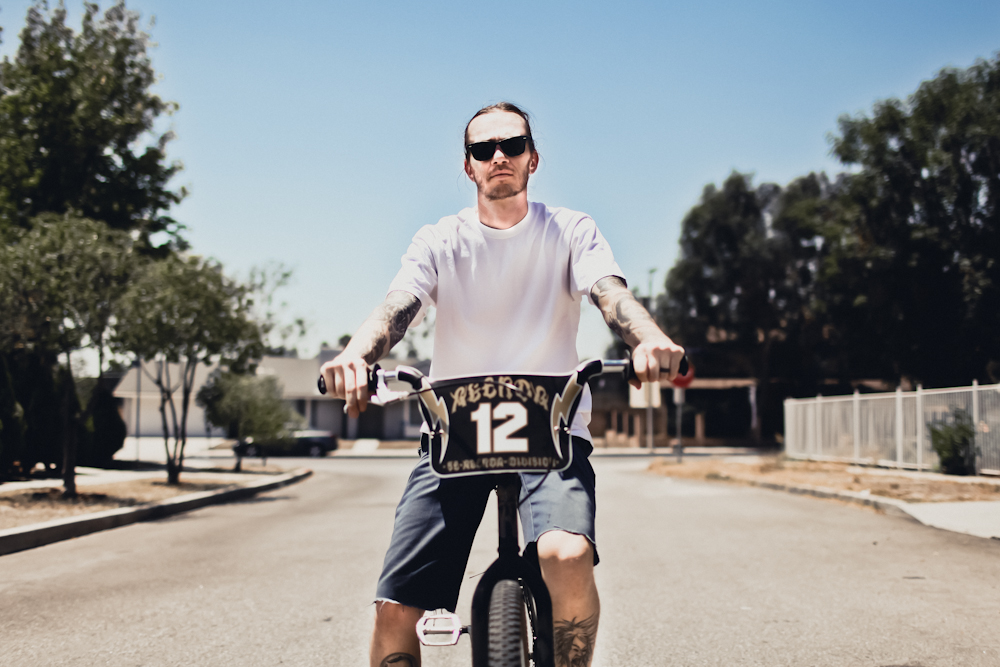
Les Schettkoe cruising in his Division Creative Foundry SE Bike produced for AGENDA
STAY HUMBLE
Stay humble. Nothing is worse than dealing with an artist who has a huge ego. I’ve dealt with extremely talented artists in my time and most have been cool, but I’ve also dealt with some really difficult ones that I’d prefer not to work with again. People who are cool and easy to work usually get more work and get further in their careers. There’s obviously exceptions to the rule but yeah, stay humble and stay hungry.
I think a lot of us, in our lines of work, have run across certain people that were cool to you when you could do something for them but later on when you see them down the road you kind of get shined on because you’re not as valuable to them at the moment.
That taught me a lot about people [in this industry] because I tend to be a trusting person and want to go out and be like, “Hey, this person’s cool.” And then you come across them later and they weren’t as cool as you thought. They were cool when I had Disney connections. I try not to live my life like that and not treat people like that. I try to be as genuine as possible; I’m not perfect but I think that’s an important thing to be as an artist.
Be honest and truthful with what you say, don’t over promise people – very important. Especially as a creative consultant. Not everything that you want to do is going to get accomplished but you have to be upfront with the people you’re dealing with so you don’t lead them down a path that isn’t there. You don’t want people to lose confidence in you, so if you tell them you’re going to “try” it’s better than promising them, “Yeah, this is happening.”
That’s another thing I’ve learned, sometimes I’ve told people, “Yeah, this is happening,” because I’ve been told by the studio heads and then they’ll go back and switch it. Now you’ve gotta be that guy, that’s part of your job; to take that hit. It’s a balancing act.
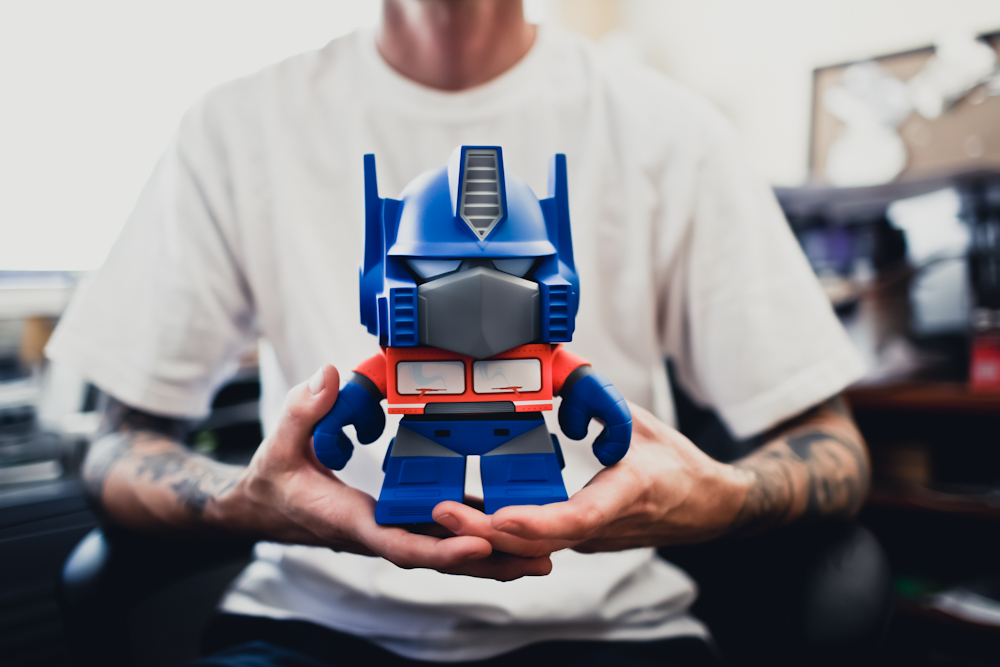
The latest round of Les Schettkoe-designed Transformers vinyl toys by The Loyal Subjects
TAKE ADVANTAGE OF OPPORTUNITIES
I never really had formal training but I always drew as a kid. For the most part, I wasn’t really that confident in my skills as an artist, so I never thought that I could do it professionally. I grew up wanting to be a cop. I went to college for Administration of Justice. I took the LAPD sheriff and CHP written and oral examinations and passed those. Until I got to the interview process and being around that group of people, I realized – I’m not a cop. That’s not me. There’s certain cop personalities and I’m not that guy.
That’s when I decided I wanted to do something creative, but I just didn’t know what. I had never touched a computer before. From that moment on I took a pre-computer graphic design course one semester, dropped out of that, and didn’t even take the final because my car broke down. I was on the way [to school], but my car broke down and I just never went back. Then one day I bought a Power Mac G4. I called my friend, who was a graphic designer at the time and was like, “How do you make a perfect circle?” I literally learned like that, “How do I outline a font?” It was a trial and error type of thing. Luckily I had plenty of time, sitting in the back of my store all day.
I did that for a couple of years and that’s when I met my friend at Disney. I started freelancing with them and then quickly got hired as a senior designer, which was crazy! It’s funny looking back at the first portfolio I showed them, which was a shitty printout from Kinkos. Either way, I was now there, at a corporate job as a senior designer. If you’re in a corporate environment and you’re not ready though, you’re going to be gone quick. When I was at Disney, we had meetings all day long, back to back. You gotta be there and be there on time and have that information that you need to share or take notes. You can’t just sit there and doodle. Then you have to follow up on whatever actually needs to be done after the meeting and the results are quantified and if you don’t make it, you’re going to be in a bad spot real quick.
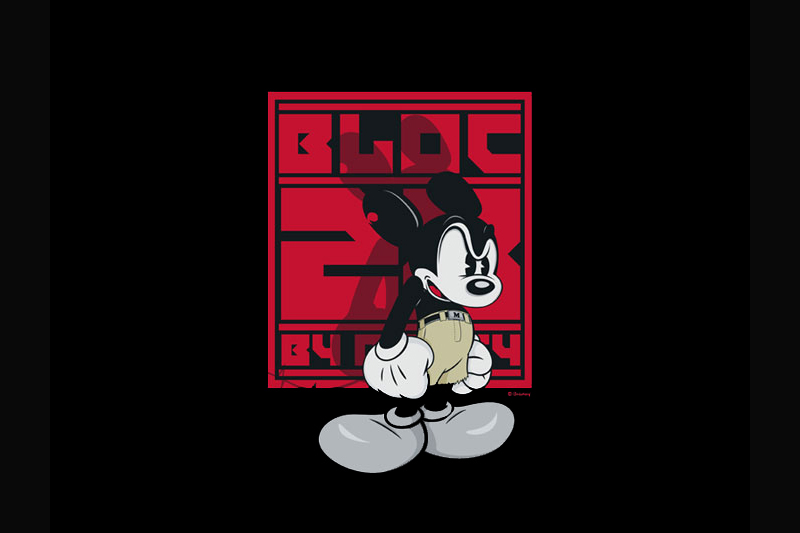
BLOC28 launched in 2008 as a bridge between street art and the iconic world of Disney
EVOLVE AS AN ARTIST
Look outside of your sphere for inspiration. Sometimes the biggest inspiration can come from something that has nothing to do with your field, but could end up being one of the cooler graphics that you’re going to design for that season. I think that’s a very important thing—to not pigeon hole yourself or get tunnel vision and only look in one direction for inspiration. Although I started in graphics, as an artist, I’ve evolved in different mediums.
A vinyl toy is something that a lot of artists and designers—especially around our world—they kind of really want to get into. I think a lot of us are big kids so doing a toy in itself is appealing. I’ve wanted to do toys for years always knowing that it’s not the most lucrative type of thing for an artist but it’s fun and that adds a lot of value; when you’re fulfilled by your work.
The differences aren’t too different from doing a T-shirt. With a vinyl toy you think that this thing is going to live in a 3D world, so if you design the front of your character you have a good basis to go off of, but what is that guy going to look like from the side? The top? The back? The bottom? And do those designs work in real life? Is it going to stand up or is that head too big? You really have to think a little more logically because you’re thinking about a real life 3D project versus something printed like a graphic on a T-shirt.
The appeal of vinyl art toys has dipped as opposed to back in the early 2000s, when a lot of people were buying them. Now the customer is more discerning, where things like licensed projects only work. There’s a few artists out there, like KAWS, who will perpetually sell. They have that fan base. But for the most part the art toy collectibles world has dipped and things like licensed products – Transformers and things of that nature – are sort of really taking foot and are the new king of the vinyl toy world.
If you look at any of the big players in the vinyl toy world (The Loyal Subjects, Funco) they’re all doing licensed products. That’s what people want. People want something that they have an attachment to. People may think your design is super cool but it doesn’t mean anything to them. They don’t remember that from when they were a kid because that didn’t exist. But they remember playing with Transformers, so you design a Transformer figure, that a guy remembers from when he was 8 years old and now he has an attachment to it and a recognition of you as an artist.
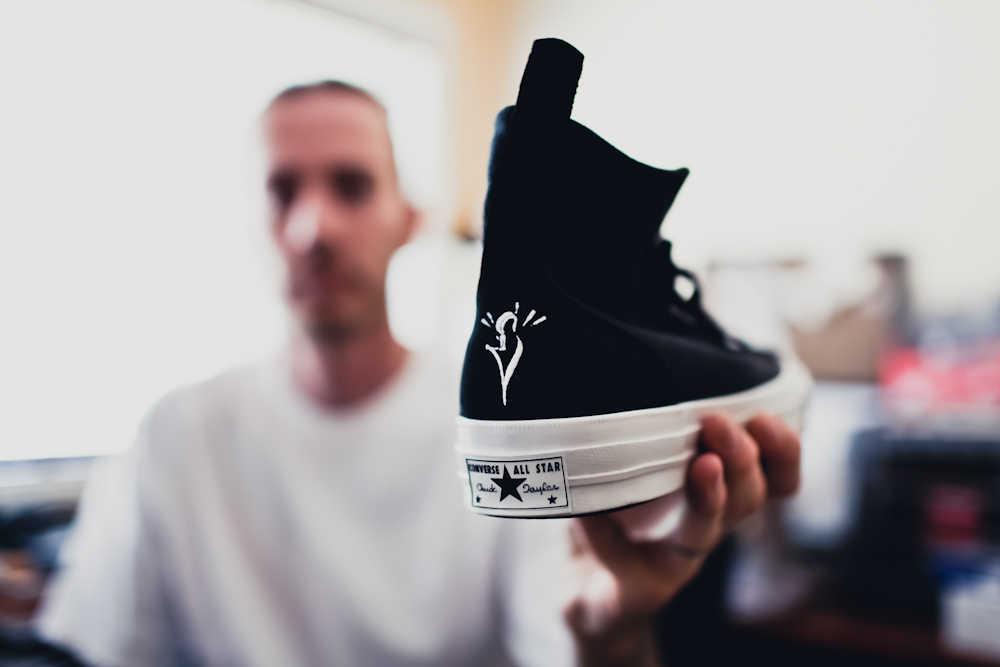
Chaz Bojorquez x Converse Chuck Taylor produced in conjunction with Division Creative Foundry
MAKE SURE YOU GET PAID
Getting paid as a freelancer can be one of the tougher things you’ll deal with. So if you’re going to be a freelancer, one of your jobs is tracking down checks and tracking down the people that have your checks. There have been many jobs I’ve done for brands that after the work was done I had to chase down to get paid, for months. Some checks I’ve never received to this day. I’ve chased checks from some of the biggest corporations in the world; it’s not just the little guys.
But it’s the nature of the business, I don’t think it’s always on purpose. I think sometimes things just get caught up in paperwork and you just have to deal with it.
The best thing you can do is be upfront when you talk to someone. I think some of the mistakes I made in the beginning was that I was excited to get work and do something cool so I forgot about the business aspect of it. And I think when you forget about the business part, it’s easier for them to as well. So if you start coming on the homie side of things you’ll be treated like that, which isn’t what you really want to do in the long run. This is a business, so you just have to make sure that you’re business-minded first. Let them know your prices and what you expect.
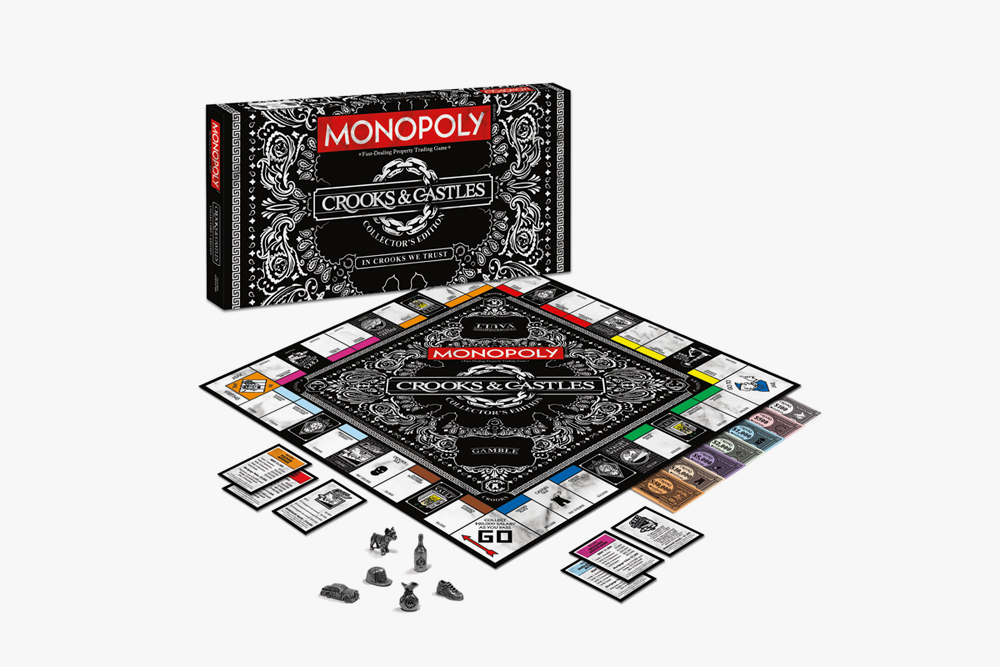
Crooks & Castles x Monopoly Board Game designed by Les Schettkoe
NETWORK
Networking is very important, but it can be difficult depending on what you like to do. If you like to go out a lot, then that works, but if you have a family, like myself, going out late to party isn’t really an option. If you keep your core circle small and tight and constantly maneuver around that you’ll be okay. You can then work with the outside circles as needed. The way I’ve done a lot of my connecting is by starting with a simple idea for a project that I think could work.
For example, I helped orchestrate and design the Crooks and Castles x Monopoly project by knowing the brand and the guys. I just knew that the Monopoly brand fit well within their lifestyle and their brand’s aesthetic. I work with Hasbro closely, so I approached them and said, “I think this might be a good idea.” They said, “Great. Go see what they think.” So I talked to the guys at Crooks and they were stoked and I put them together, then I just helped manage and facilitate the project all the way to fruition. It was awesome.
Usually that’s how it goes. There will be times, though, if a studio wants me to work with a brand I’ll approach them and maybe just lay out a few ideas and say, “Are you guys interested in working with this company?” And let the other brand have more say in what they want to do because I don’t want to pigeon hole them unless there’s an obvious fit, like Monopoly and Crooks. Monopoly and GI Joe wouldn’t fit, but Crooks and Monopoly is a no brainer.
It’s kind of easy if you have the right relationships with people. And that goes, again, with being humble and being cool to people, and being honest where people trust your work and word. But it’s always a struggle at the same time; I don’t wanna overstate that it’s easy or anything.
It’s always been a struggle for me because, like a lot of artists, I think we’re kind of introverted somewhat, we do things behind-the-scenes and let our work speak for itself. So it was hard for me and unnatural to want to attach my name for notoriety sake. I’ve tried to put that behind me somewhat because I try to think with more of a business mindset, which is good for furthering your career, not feeding an ego. I’m not interested in that, I just want to make sure I’m recognized for my work so I can continue doing what I love doing.
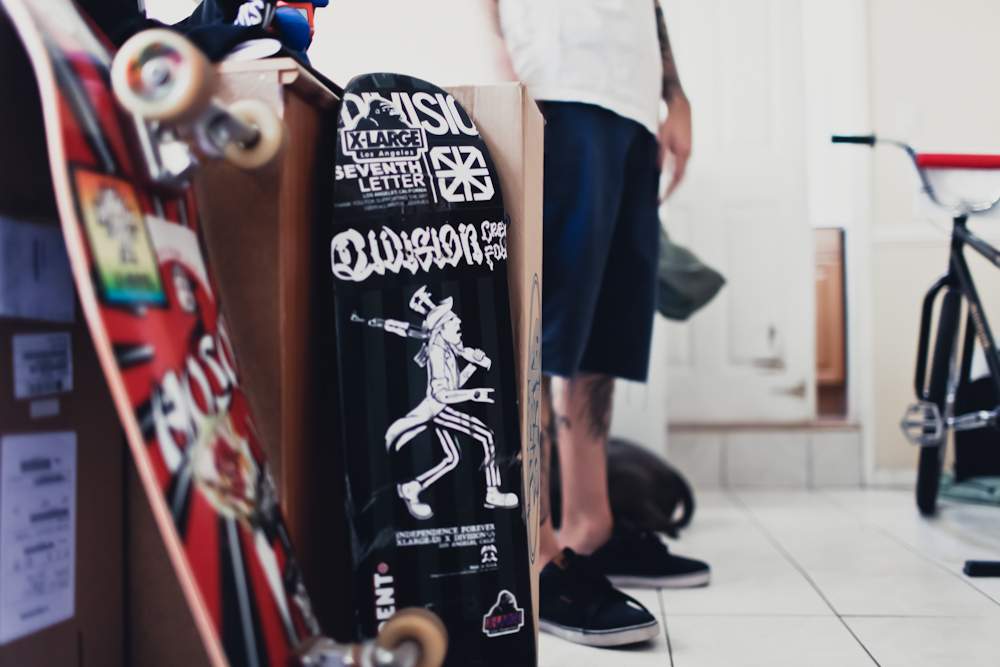
A few other projects by Les, including a skate deck in collaboration with X-LARGE
BE PROFESSIONAL
Being a professional in this [streetwear] environment – as relaxed as we are – there’s still a high level of professionalism and reliability that people look for. If you’re a designer that doesn’t meet his deadlines clients are going to lose confidence in you quickly, because there’s so many times when people need a graphic and they really need it by a particular time. If they don’t have confidence that you’re going to deliver then they’re going to go to the next guy. And there are a million designers out there. Everyone with a Mac is a designer now. So that’s what’s going to separate you from the other guys that have Illustrator.
Working for Disney was, for me, like finishing school. I did a little bit of college, but I owned a record store, so going to a corporate environment from a record store was literally night and day. It was meetings, answering emails and meeting tight deadlines. To be able to convey your ideas to someone other than your normal peers; executives of companies—to be able to get those ideas across is a very good skill to develop. That was something I had to learn when I first started. Saying things like, “Damn, this shit is fucking dope.” I couldn’t say that. So you start learning different words. The weirdest thing is you start picking up this corporate terminology. I’ve noticed funny terms in the corporate world, especially everytime they say “urban.” We all know what they really mean. [laughs]
::
Les Schettkoe’s Instagram
Division Creative Foundry’s Instagram

